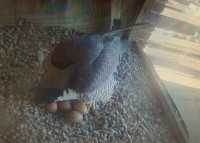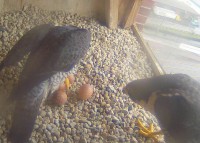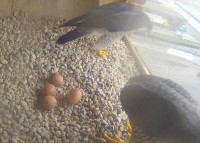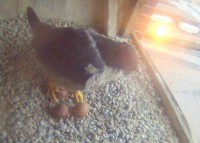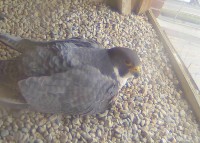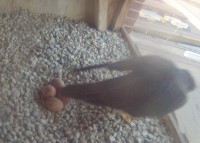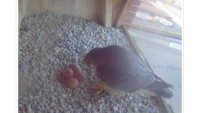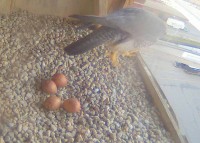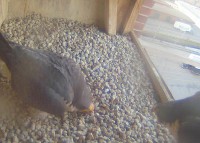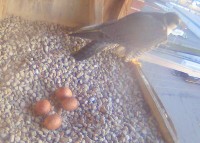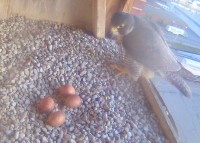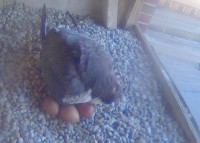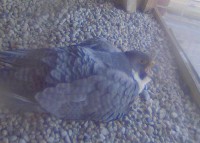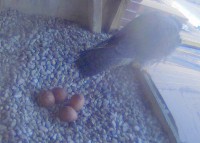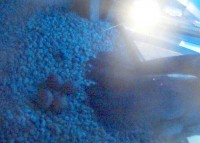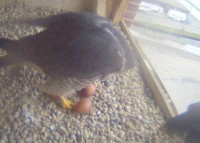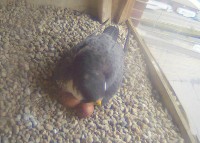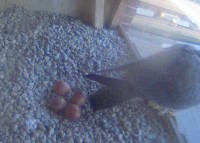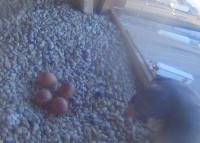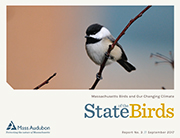Lawrence Peregrines: Embryo Day 15
April 27, 2018 in In the Nest Box, lawrence peregrines, Peregrine Falcons Eastern Massachusetts, Peregrine Falcons Massachusetts
First thing this morning the peregrines had sunshine, little ind and temps at 49°F. The forecast for day ahead calls for a chance of rain between 1pm and 3pm, then showers likely after 3pm. Increasing clouds, with a high near 62. Calm wind becoming southeast 5 to 7 mph in the afternoon. Chance of precipitation is 60%. New precipitation amounts between a tenth and quarter of an inch possible. So we start off with sun, turning to clouds, and then rain!
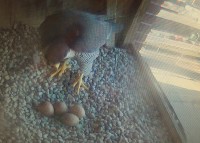 After my first watch, the male was on the eggs for over an hour, then just after 8:30 AM, the male departed and moments later the female entered the nest box, and settled right over the eggs, shaked a bit and that was it!
After my first watch, the male was on the eggs for over an hour, then just after 8:30 AM, the male departed and moments later the female entered the nest box, and settled right over the eggs, shaked a bit and that was it!
Day 15:
* Talons begin to form.
* The cere is visible (soft fleshy area found at the top of the beak)
* Pterylae visible on the sternum
* Flight feathers appear.
* Feather tracts appear over the sternum.
* Lower eyelids develop.
* Thyroid gland starts Thyroxine secretion
* Embryo moves to a position on the right of the egg
* Legs and torso grow faster than head
* Embryo sinks because of that into the yolk
Literature cited: Veldhuis, Froona, Embryonic development day 15 – 18, Sept 20, 2008 http://falcoperegrinus-froona.blogspot.com/search/label/embryonic%20development
